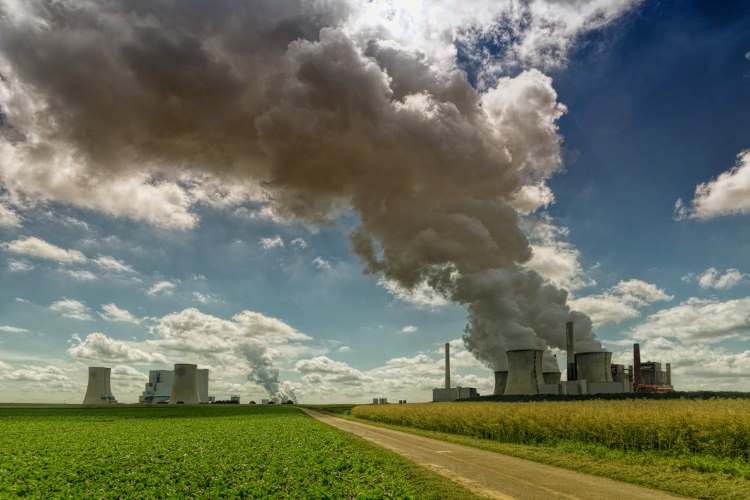Air quality stripes: Air pollution remains one of the most pressing environmental and public health challenges of our time, affecting over 99% of the global population. Yet, it is often referred to as the invisible killer due to its imperceptible nature. However, a recent scientific breakthrough has transformed the way we understand and visualise air pollution, making the invisible visible and highlighting the stark inequalities in air quality across the globe. The newly developed air quality stripes project also shows how focused government action can address the growing air pollution crisis.
Inspired by Ed Hawkins’ climate warming stripes, a team of scientists from the universities of Leeds, Edinburgh, and North Carolina State, in collaboration with the UK Met Office, has created air quality stripes. This innovative tool visualises air pollution data from 1850 to the present day, using color-coded stripes that represent the levels of particulate matter (PM2.5) in the air. The project provides a vivid representation of how air quality has evolved over time, making complex data accessible to a broad audience.
READ I Capital goods sector: From import dependence to export excellence
What are air quality stripes
Each stripe corresponds to a year, with colours ranging from sky blue (indicating air quality that meets World Health Organisation guidelines) to shades of yellow, brown, and black (indicating higher levels of pollution). The stripes not only reveal historical trends but also underscore the disparities in air quality across different regions. For instance, while Europe has seen substantial improvements in air quality, cities in Central Asia and Africa are experiencing worsening conditions due to rapid urbanisation and industrial growth without adequate pollution controls.
The air quality stripes project tells a powerful story of how government intervention can lead to significant improvements in air quality. Two notable examples are London and Beijing, cities that have faced severe air pollution crises but have also made remarkable progress through concerted policy efforts.
Success stories of government action
For over a century, London was plagued by coal-induced smogs, culminating in the Great Smog of 1952, which resulted in 12,000 deaths. The government’s response, including the implementation of Clean Air Acts, marked a turning point in the city’s air quality. The transition from coal to cleaner fuels, such as heating oil and fossil gas, led to a significant reduction in particulate matter, as reflected in the air quality stripes.
Similarly, Beijing’s air pollution crisis gained international attention during the 2008 Olympics. At the time, air pollution deaths in China had reached alarming levels. In response, the Chinese government implemented stringent measures to clean up industry and traffic, resulting in rapid improvements in air quality. The stripes for Beijing demonstrate the positive impact of these interventions.
These examples highlight the critical role that government policies and regulations play in tackling air pollution. When governments prioritise public health and environmental sustainability, they can achieve substantial reductions in pollution levels, improving the quality of life for their citizens.
Need for international cooperation
While some regions have made significant strides in improving air quality, the air quality stripes also reveal troubling trends in other parts of the world. Cities in Central Asia and Africa, such as Islamabad and Nairobi, are experiencing a rise in particulate matter pollution due to factors like rapid industrialisation, urbanisation, and weak regulatory frameworks. These trends pose serious health risks to local populations and highlight the urgent need for international cooperation to address the global air pollution crisis.
The disparities in air quality progress between regions underscore the importance of targeted international efforts to support developing nations in implementing effective air pollution controls. This includes sharing knowledge, technology, and financial resources to help these countries adopt cleaner energy sources, improve industrial practices, and enforce stricter environmental regulations.
The breakthrough in visualising air pollution through the air quality stripes project provides a powerful tool for understanding and communicating the global air pollution crisis. By making the invisible visible, these visualisations underscore the critical need for concerted government action to reduce air pollution and protect public health.
The success stories of cities like London and Beijing demonstrate that with enough political will, even the most severe air pollution problems can be mitigated. However, the ongoing challenges in regions like Central Asia and Africa highlight the need for continued international cooperation and targeted efforts to ensure that all populations can breathe cleaner air in the future.

